7 Of The Best Chemical Peels On The Market, According To Sephora Shoppers
Thespotlyte | July 28, 23
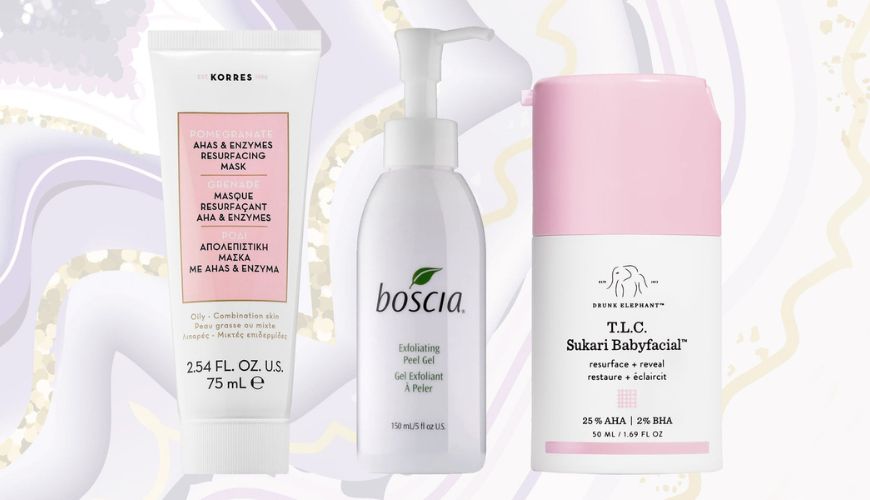
When your daily cleanser just doesn’t seem to be doing the job on dullness, it may be time to introduce a chemical peel into your routine. In addition to leaving you with a radiant glow, peels can treat a range of skin concerns, from fine lines to sun spots.
Unlike physical exfoliators, which contain abrasives (like walnut shell) to manually slough away dead skin, peels rely on a combination of acids to slough away a deeper level of dead skin cells. But the word “chemical peel” can mean a few different things. According to Dr. Pearl E. Grimes, Medical Director of the Grimes Center for Medical and Aesthetic DermatologyTM, professional chemical peels can range from superficial and medium to deep. The level of the peel directly relates to how far it sinks into the skin — and how much it resurfaces the skin. “The strength, frequency, and type should all be prescribed by a qualified dermatologist who is familiar with your skin.” she adds.
If you’re not ready for the intensity of a professional peel, consider incorporating an at-home peel into your weekly routine. (Note: Grimes still recommends seeing your derm to determine which, and how strong of a peel is best for your skin concerns.) At-home peels can be used weekly to carefully slough away only the outermost layer of dead skin. These DIY treatments contain the same types of ingredients as professional peels, but at a much lower concentration. Specifically, they rely on chemical exfoliators such as glycolic acid (from sugars), malic acid (from apples), lactic acid (from milk), citric acid (from citrus fruits), and salicylic acid (from salicylate or fruit origin).
Let’s break it down: Glycolic, malic, lactic, and citric acids are all alpha hydroxy acids (AHAs). AHAs induce exfoliation of the epidermal cells and increase moisturization of the skin. Salicylic acid is a beta hydroxy acid (BHA), which goes into the pore itself to exfoliate, making it a classic choice for acne treatment. Depending on the type of peel, the concentration and strength of these acids can vary. (Learn more about these acids and others here.)
If you’re a regular facial scrub user, or even if you use a facial cleansing brush with any regularity, you’ll want to cut back for a bit before and after any type of peel. Overdoing it on the exfoliation front can leave skin irritated and raw, and can totally throw off your skin’s microbiome — the balance of good bacteria that keeps your exterior protected. But don’t let that steer you away from a peel! When used carefully — most pros recommend applying a chemical exfoliator once or twice per week — you’ll see an incredible glow. Don’t have one you love? Find eight of the most highly-acclaimed chemical peels, according to the tough standards of Sephora® customers.
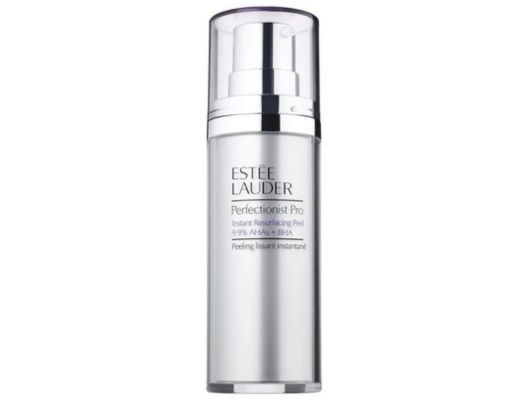
If it’s rough texture that you’re looking to smooth, the Estée Lauder® Perfectionist ProTM Instant Resurfacing Peel ($75) will do just that, thanks to AHAs. The formula goes to work quickly (reviewers notice improvement after one use) and with little to no irritation. Leave on for 10 minutes and rinse off for smoother-looking skin, stat.
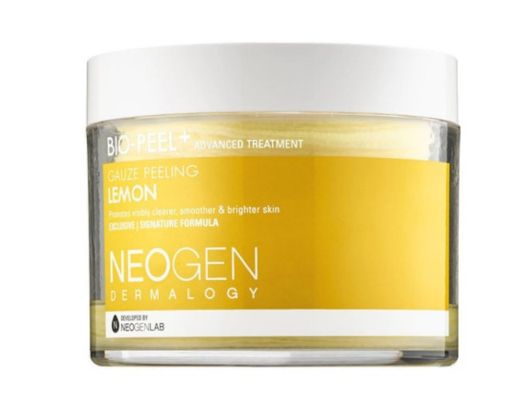
The slightly rough texture of the Neogen® DermologyTM Bio-Peel Gauze Peeling Lemon ($27) manually exfoliates away dead skin, while AHAs and vitamin C work at a deeper level to fade dark spots and dissolve dirt and oil. Simply make a few passes over clean, dry skin (as you might with a makeup wipe).
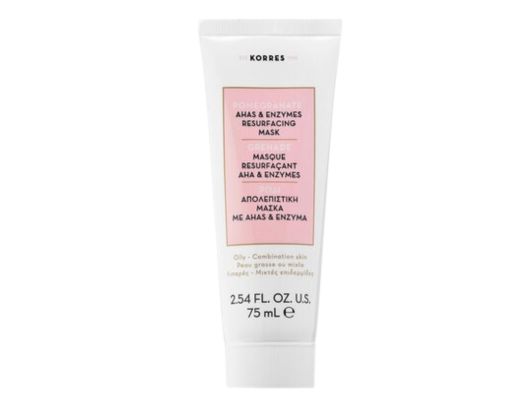
Glycolic acid and pomegranate seeds in the Korres® Pomegranate AHA + Enzymes Resurfacing Mask ($34) tag team to unclog oil and dirt packed pores. Apply in circular motions to manually shed dull skin. Leave on for 10 minutes and let the chemical exfoliators finish up the job.
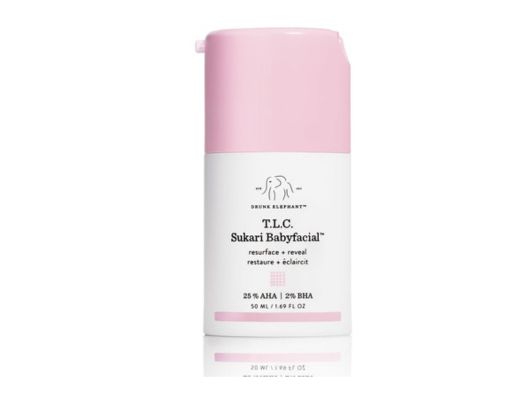
Drunk Elephant® T.L.C. Sukari Babyfacial® ($80) is a cult favorite facial in a bottle. (It has over 1,400 reviews!) The formula uses a strategically pH balanced blend of acids, pumpkin ferment extract, and soothing matcha to smooth, soothe, and brighten dull skin. Apply a thin layer to clean skin, set a timer for 20 minutes, and prepare to feel significantly softer after you rinse off.

When you need a slightly deeper level of sloughing, try DermaDoctor’s® Physical Chemistry® ($75). It’s a peel and microdermabrasion treatment in one that works to fade acne scars, blotchy skin, and enlarged pores. This one is particularly strong, so be sure to dial back on any other potentially drying products beforehand and for a few days after.
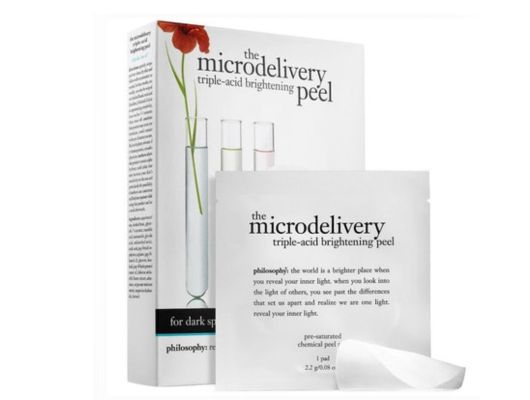
Use the mandelic, phytic, and azelaic acid-saturated pads in the Philosophy® The Microdelivery Triple-Acid Brightening PeelTM ($70) once a week for a steady (and not too harsh) skin-smoothing.
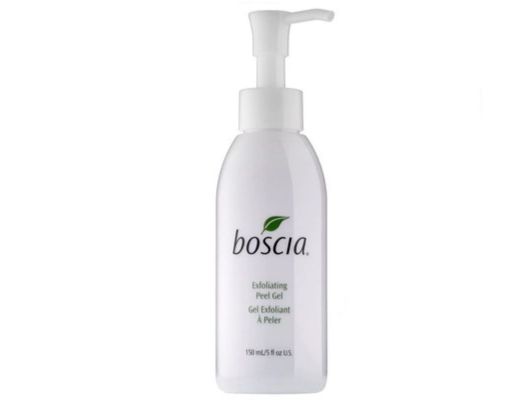
Scrub, purge, and treat with Boscia® Exfoliating Peel Gel ($34) botanical blend. This three-in-one exfoliates, deep cleans, and helps protect skin from harmful free radicals. Use it in place of your normal cleanser once or twice per week for the recommended dose of exfoliation.
Some complementary products were provided to the author for the purpose of writing this article.
Product prices may vary from the time this article was written.
Allergan® may receive commission for purchases made through links in this article.






